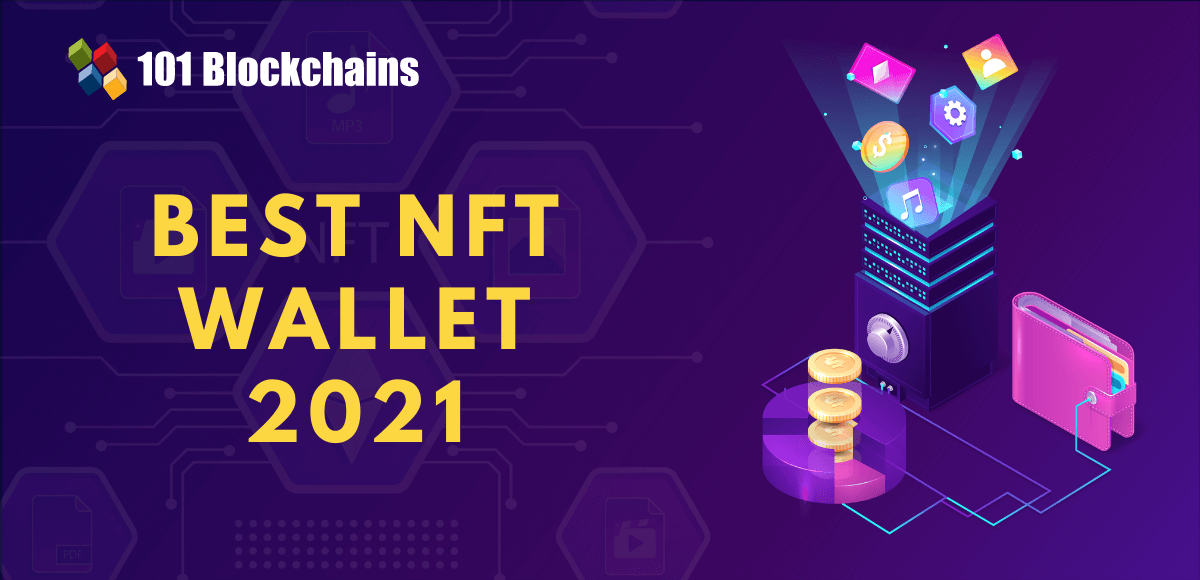Learn how blockchain truly works, master key definitions, and uncover what makes smart contracts so "smart." Dive into the fundamentals, gain valuable insights, and start your blockchain journey today!

- Reviews
Diego Geroni
- on September 05, 2021
Top 10 Enterprise Blockchain Implementation Challenges
As blockchain transitions from hype to reality, various top blockchain implementation challenges are coming to light. Let’s dive in deeper to better understand these challenges and how you can overcome them.
In reality, blockchain implementation challenges simply imply that there is more to work on before the technology can fulfill its promise. Further, it is also becoming clear that technology requires more detail in terms of enabling better understanding, hence better implementation.
Interestingly, getting to the bottom of the challenges requires a good understanding of the technology and what it entails. Even now, blockchain is quite undefined. As such, you might not be clear on what to expect from it in the future.
Predicting the future is hard and quite vague, honestly. Notably, the issues that are still to be clear include blockchain implementation architecture which is yet to be standardized. In this light, we will discuss the blockchain problem we are facing today and whether you can overcome them or not.
Build your identity as a certified blockchain expert with 101 Blockchains’ Blockchain Certifications designed to provide enhanced career prospects.
Top 10 Enterprise Blockchain Implementation Challenges
Please include attribution to 101blockchains.com with this graphic. <a href='https://101blockchains.com/blockchain-infographics/'> <img src='https://101blockchains.com/wp-content/uploads/2019/02/Top-10-Enterprise-Blockchain-Implementation-Challenges.png' alt='Enterprise Blockchain Implementation Challenges='0' /> </a>
Rising Cost of Blockchain Implementation
One of the major blockchain implementation challenges is the cost of the whole process. Notably, most of the existing blockchain platforms are quite inefficient in terms of the speed of transactions and energy consumption. For instance, while the bitcoin network transacts only 3 to 5 transactions per second, it gobbles up a lot of energy in the process.
On the other hand, Ethereum can manage up to 15 transactions per second. Unfortunately, all these compare so poorly against VISA which can carry out 1,667 in one second.
Basically, enterprise blockchain platforms run on a similar framework as bitcoin and others. Notably, the bitcoin network was the first to come to light, and it is the one that inspired all of the other blockchain-based technologies that are extant today.
Nevertheless, popular enterprise blockchain platforms have made great strides in terms of transaction speeds.
For instance, Hyperledger Fabric claims to enable speeds of up to 3,500 TPS which is just about twice the speed over VISA platform. However, Hyperledger Fabric does not run-on proof-of-work platforms like bitcoin and hence is slow on power consumption.
This is not to say that the implementation process is cheap. First, one will need to hire the right people who are in short supply. Further, most of the software requirements are expensive.
In short, one must be ready to pay for the convenience that comes with the new technology. This includes membership to the consortia that are pushing the enterprise blockchain projects where most of them are private. Anyhow, let’s check out the blockchain problems and their solutions in the next segment.
Curious to learn about blockchain implementation and strategy for managing your blockchain projects? Enroll Now in Blockchain Technology – Implementation And Strategy Course!
Low Scalability
Blockchain technology, and by extension the enterprise blockchain technology, is contending with the problem of the inability to serve many users.
With the increased demand for enterprise blockchain and the associated applications, companies that can successfully scale their enterprise blockchain platforms will reap big.
Notably, for the technology to gain substantial adoption by the mainstream entities, the throughput should be sufficient. Already, there are a number of ongoing projects that are investigating ways through which the transaction speeds of enterprise platforms can remain high even with many users on board.
For enterprises that have a large number of customers, it is clear that scalability is necessary for them to consider the technology.
Unfortunately, most of the existing enterprise blockchain networks are untested to that extent. So, this is one of the huge blockchain implementation challenges at the moment. Notably, there is no evidence of an enterprise blockchain network like Corda or Hyperledger Fabric being used by large banks to determine the success rate.
As such, few institutions, if any, are willing to take the chance for the fear that it could backfire on them. Therefore, it is imperative that the various enterprise blockchain projects undertake to assure the market that their platforms are sufficiently scalable by actually putting them in practice. Anyhow, let’s check out the blockchain problems and their solutions in the next segment.
Start your blockchain journey Now with the Enterprise Blockchains Fundamentals
Low Data Privacy
One of the greatest selling points of enterprise blockchain is that it decentralizes operations such that users do not require the intermediation of middlemen. However, it’s also one of the blockchain implementation challenges.
In reality, it is also true that most enterprises would not appreciate the case where anyone can view their data which might be quite sensitive to their core business. Let’s see the challenges of implementing blockchain in the supply chain as an example.
Let us say Company A and Company B are competitors in the shipping industry. Further, let us assume that the companies are interested in joining “TradeLens,” a blockchain-based supply chain solution that targets the digitization of operations in the shipping industry.
Notably, TradeLens is a case of implementation of blockchain in the supply chain where firms in the shipping industry can easily access data relating to goods. Further, the solution runs of IBM’s Hyperledger Fabric, where interactions are peer-to-peer. Also, all the participants can easily access any kind of data through the distributed ledger. In essence, this implies that Company A can view any kind of data relating to Company B.
If Company A and Company B are business rivals, Company B will lose any kind of leverage it might have once Company A views data that should have remained private. For instance, Company A will prevent any kind of surprise or strategic move Company B had in mind. This way, business for Company B will not be as good as the firm might have envisioned.
In this light, it is unlikely for the companies to join such a platform. Therefore, data privacy remains a sticking point that enterprise blockchain projects are looking to remedy if the technology is to go mainstream.
Insufficient Knowledge-base on Blockchain
Blockchain as a technology is just taking off. Notably, most of the solutions that are coming up are novel, and they are mostly technical to the majority of people in the industry. However, the organizations do not have people who clearly understand the concept of blockchain and by extension, enterprise blockchain. So, this is another one of the blockchain implementation challenges that hinder the growth of this sector.
Notably, the organizations lack information concerning aspects like the choice of the best enterprise blockchain platform to adopt. Further, the firms are not cognizant of the appropriate blockchain implementation steps that should guarantee the best outcome as well as optimal utilization of the technology.
Interestingly, blockchain technology promises to solve many issues that were initially intractable. The technology promises to touch on almost all types of industry, ranging from supply chain management to identity management. Therefore, organizations need to be clear on their blockchain needs so that they can choose the best enterprise blockchain platform.
To successfully deliver the objective, the organization will need sufficient internal blockchain knowledge. Interestingly, they could try to fill any gaps by hiring external talent. However, there is a shortage of skilled people who can successfully achieve the objective. Therefore, it becomes difficult for firms to implement the blockchain-related project.
Getting confused about implementing blockchain is a normal scenario as it’s still a new technology. Check out our guide on “Do You Need a Blockchain?” To make the decision right now!
Difficulty in Transitioning from Legacy Networks
Another one of the blockchain implementation challenges is the transitioning phase form the legacy networks. Before blockchain entered the picture, most of the things it is targeting to change have been already operating fairly well.
Notably, despite the few challenges that they encountered, the industries were delivering service or products to their customers. In particular, the industries were so used to the established legacy structures as well as the standards established in line with the structures.
Preferably in the supply chain space, this is one of the major challenges of implementing blockchain.
Further, the people in the industries are quite familiar with the legacy structures to extend that any attempt at introducing fresh structures will destabilize the whole industry. For instance, it is clear that the financial industry is among the sectors facing a revolution sparked by blockchain. Here, the sector has established structures that guide service delivery.
Notably, people use VISA for cross-border transactions. For banks, they use SWIFT and other means for the movement of cash in bulk. Such structures are so entrenched in the system that it will take a long time to introduce fresh mechanisms. Interestingly, this is exactly what blockchain is doing. This technology is fundamentally shifting the nature of operations in all ways conceivable.
Like earlier discussed, legacy systems are deeply entrenched in the industry such that people could be reluctant to try out new systems. For instance, people in the financial industry could resist the adoption of blockchain technology because – i) they know so little about it and ii) they feel it could herald massive job losses due to some positions falling redundant.
Excited to learn about the supply chain in blockchain? Enroll Now in Enterprise Blockchains and Supply Chain Management Course
Lack of Technology Partners
Like earlier explained, blockchain is still an emerging technology, and many people are yet to gain a clear insight into it. This is to say that even for those organizations that would want to implement it, there is no clear blockchain implementation roadmap.
Notably, the lack of clear standards means that there is a lot of information which is more confusing than it is helpful.
Nonetheless, there are efforts at making this process easy for those that want to implement enterprise blockchain. Notably, the most important step to consider before taking the plunge is to find the right technology partner to guide through the labyrinth.
However, here comes another hurdle. Who is the best partner, and how can one tell they have found the right partner?
Interestingly, this is one of the major blockchain implementation challenges that arise when entities are looking to implement the technology.
Getting the right partner will enable an organization to discover the best blockchain implementation roadmap.
Presently, there are umbrella projects like Hyperledger, Enterprise Ethereum Alliance, and other enterprises blockchain platforms like Corda, Microsoft Azure and Hyperledger fabric. Particularly, these are private blockchain platforms that bring together like-minded organizations focused on blockchain.
The reality is that the blockchain cost of implementation is prohibitively high. As such, it is only prudent that one looks for a partner to help implement the technology.
Even with the many and high-profile partners available, sometimes it is quite costly to access their platforms. Further, the existing platforms are filling up quickly, which means they could soon overcrowd. In such an environment, it would be difficult to get customized services given the huge demand.
Security Issues
Challenges deploying blockchain comes in various forms. It is clear that one of the greatest selling points of blockchain is its resilience against cyberattacks.
Nevertheless, the blockchain sector faces various risks from bad actors. Notably, the pace of the implementation of the technology is seemingly exposing parts of the industry to hackers.
In reality, there are numerous vulnerabilities inherent in technology due to immature processes and defences. For instance, the chances of a person falling victim to phishing scams are quite high. Further, the lack of clear standards of development implies that there is a lot of malware that is lurking around within the industry. These, coupled with technology vulnerabilities as well as implementation exploits, pose a grave danger to unsuspecting users.
To escape the possibility of security problems, users are continuously going for private blockchain networks. Notably, these are networks that are not open to the public and that they require authentication before access. Examples of such blockchain platforms include those on which various enterprise blockchain projects run.
However, the problem with private networks is that users do not have the same autonomy that users of public blockchain networks have. Here, there is a tendency by the “presiding” node to exert some restrictions on what participants can do. For instance, this affects the ability of users to tinker with the platform the way they would want to.
Nonetheless, the public blockchains are insecure such that anyone can run a node within the ecosystem. If a bad actor successfully attacks a platform such that they can initiate double spending of coins, the platform is likely to lose credibility. This implies that anyone with investments in the ecosystem will experience losses.
Criminal Activity
Enterprise blockchain implementation is facing a huge challenge that touches on the ‘cleanness’ of the technology. Notably, the technology assumed global popularity after two things happened.
One, it brought to light bitcoin, which threatened to turn the financial industry on its head. Secondly, the technology seemed to abate high profile criminal activity like money laundering. Interestingly, bad actors used the technology to move huge tranches of cash stolen elsewhere. Blockchain does face this problem even today!
Further, researchers at Cornell University Library established though a survey that many people distrust blockchain because of the infamous cryptocurrencies. Notably, the study established that criminals use digital currencies to settle shady transactions over internet-based marketplaces.
Also, the study observed that cybercriminals were utilizing crypto to ask for ransom in cases of Distributed Denial of Service (DDoS) attacks of computers.
As a result, blockchain took on an unlikable quality. For the potential adopters of the technology, it remains important to first allay fears of bad actors continuing to use the platform to conduct their criminal activities.
In essence, there is some kind of fear among the new potential users who are not ready to get embroiled in a scheme which they do not like.
In reality, it is the thought of such incidences that gets in the way of potential users of the technology. This is one of the major challenges in deploying blockchain technology at the moment.
Not sure how to build your career in enterprise blockchains? Enroll Now in How to Build Your Career in Enterprise Blockchains Course
Lack of Regulations
This is one of the blockchain challenges that come with solutions and opportunities. Given the various unfortunate incidences discussed above, some government entities are reluctant to allow the technology the freehand to grow. Further, regulators are finding it hard to define the legal environment for the technology, given its complexity.
For instance, a blockchain network consists of various nodes spread across the globe. Therefore, once a transaction happens on the platform, it is difficult for authorities to clearly define the jurisdiction and therefore, the correct legal obligations of the parties to the transaction.
In the midst of this legal conundrum, it is hard to imagine how upcoming legislation like the EU’s General Data Protection Regulation (GDPR) will work.
In essence, the regulation gives digital rights to ownership of data stored on a blockchain platform. Interestingly, it is clear that users of blockchain platforms can operate anonymously. In such a case, knowledgeable observers wonder how effective the GDPR will be.
Further, the fact that the GDPR proposes some form of data protection is more confusing. Apparently, data stored on the distributed ledger is available to all participants to view, but not to alter.
Also, not all the data belonging to a certain transaction is available for viewing by the users. This is due to a blockchain network property called data minimization. Therefore, this is evidence that data on a blockchain network is already protected.
Nevertheless, the point is that the blockchain community is not yet clear on what the law says about the emerging technology. As such, this is a point of concern that has many potential users of enterprise blockchain second-guessing their decisions.
No Interoperability of Enterprise Blockchain Platforms
Like earlier noted, there are numerous enterprise blockchain platforms in existence today. Interestingly, each project endeavors to provide certain solutions to the users.
For instance, IBM’s Hyperledger Fabric is excellent in managing supply chains, while R3’s Corda is best for financial industry solutions. Apparently, there is some kind of disconnect among these platforms, which makes inter-platform navigation a nightmare.
Want to learn the basic and advanced concepts of Blockchain and Hyperledger Fabric? Enroll Now: Getting Started with Hyperledger Fabric
Enterprise blockchain interoperability is a pertinent issue to which developers must find a solution if mass adoption is to happen. Notably, one should be able to join Hyperledger fabric but be able to utilize services on Corda or Microsoft Azure without any serious compatibility problems.
This is one of the blockchain challenges that come with solutions and opportunities.
Interestingly, two of the most popular enterprise blockchain platforms, that is Enterprise Ethereum Alliance and Hyperledger, met last year with an eye on the problem.
Notably, the projects intended to work together with such that they could try and solve the problem of interoperability. Part of the agreement entailed setting up of certain standards which would guide the implementation of enterprise blockchain solutions.
Despite the enthusiasm behind the meeting, there is a lot to desire in terms of interoperability. Interestingly, interoperability is a property of software that determines if it has any chances of mass adoption.
In particular, there are myriads of software out there where each has users. Therefore, there must be a way through which users of different software can interact and conduct meaningful business. In this light, there is a need for more work in terms of enterprise blockchain interoperability to drive mass adoption.
Aspiring to make a lucrative career as a blockchain developer but not sure how? Check the detailed guide Now on How To Become Blockchain Developer?
Final Words
Now that you are aware of the challenges of deploying blockchain technology, you can make the educated decision on whether you want to use blockchain or not. However, blockchain is going to be the future even if there is a blockchain problem today.
With the passage of time, blockchain technology is getting the updates that will get rid of these underlying issues. More so, in many cases, enterprises are already using private blockchain technologies to deal with the issues.
Anyhow, if you are just a novice and want to learn more about this technology and its issues, then we recommend checking out our blockchain courses. This can be the start of your blockchain journey.
*Disclaimer: The article should not be taken as, and is not intended to provide any investment advice. Claims made in this article do not constitute investment advice and should not be taken as such. 101 Blockchains shall not be responsible for any loss sustained by any person who relies on this article. Do your own research!






